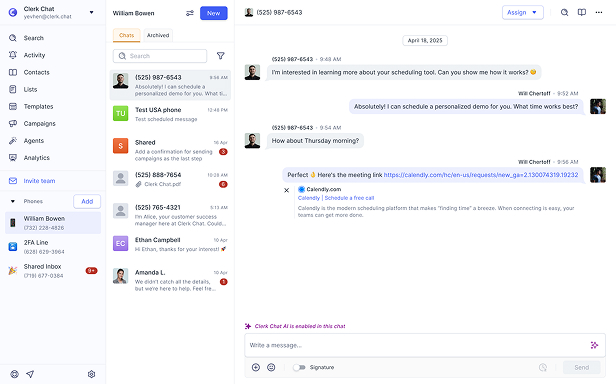How Conversations Build Trust in Healthcare
By Alexander Haque
- Published: October 23, 2025
In healthcare, no one wants to feel like “Ticket #18125.”
Patients don’t reach out for support to be logged, tagged, or queued. They want to feel cared for.
But here’s the problem:
- Patients call, leave a voicemail.
- Staff bounce between shared inboxes, voicemails, and texts.
- Context gets lost in the shuffle.
The relationship and trust gets lost. It’s a problem for both the patient’s experience and your team.
In this article:
Why do tickets fail in healthcare patient support?
Tickets and case numbers keep things organized for staff. But they don’t build trust with patients. It likely creates a fractured experience.
When a patient gets an automated reply saying, “Your case #18125 has been assigned,” here’s what they really hear:
- You’ve been logged into a system.
- You’ll wait until someone has time.
- You’ll probably have to repeat yourself.
That’s not patient-centered care. It’s transactional.
The real problem is continuity, and this is one area where AI makes a difference. Instead of treating each message like a new ticket, AI agents can carry the patient’s context from one channel to the next. The details shared in a voicemail are remembered when the patient texts. The result is a consistent, connected story that saves patients from frustration and spares staff from asking the same questions again and again.
When healthcare conversations flow this way, patients feel heard, not processed. And staff finally get to focus on care instead of copy-pasting notes between systems.
See how Clerk Chat helps healthcare teams deliver connected conversations across phone, text, and email — so patients feel cared for, not queued.
Learn moreWhat does “conversation-first” support look like in healthcare?
Imagine a patient texts your main line about a prescription refill. They get an answer immediately. Later, when they call to check progress, the nurse or AI agent already knows what they texted.
That’s conversation-first support where every interaction feels like part of one ongoing conversation. It’s:
- Immediate because patients get help in the moment, not hours or days later.
- Contextual because every channel carries the patient’s story forward, so staff don’t have to ask the same questions again.
- Personal feel recognized and cared for, even if they’re assigned a case number.
For healthcare providers, this shift also reduces friction inside the organization:
- Staff spend less time searching across inboxes and notes to find “what the patient said last time.”
- Handoffs between team members don’t mean lost information or repeated intake questions.
- AI agents can bridge the gaps, ensuring the context is preserved when patients move from SMS to phone and back again.
This is an opportunity for providers to have a single, unified conversation and a patient experience that builds trust.


How can AI agents improve patient communication?
PSA: AI doesn’t replace clinic staff. It supports them.
Here’s what AI-powered patient support and engagement can do in healthcare:
- Respond instantly with memory based on what the patient said last time and resumes the conversation where it left off
- Replies and answers intelligently via FAQs (office hours, directions, insurance questions), guides patients through prep instructions or appointment steps, and recognizes when a human provider needs to step in
- Reduces staff burnout with fewer repetitive calls and emails and less time is wasted searching across systems
What does modern healthcare support look like?
It’s not more software (although software audits and updates are often necessary). It’s not bigger teams. It’s conversations across every channel, on the same trusted business number.
Patients reach out by text, call, WhatsApp, RCS, and get help right away. Staff or AI agents respond with the full context, not a blank slate. Conversations stay warm, responsive, and human, even when automated.
This isn’t about replacing people. It’s about giving your team the time to focus on real patient needs.
The difference between “We’re here for you” and “Your ticket has been submitted”? It’s a system built for people.
Alex is passionate about building truly groundbreaking technology that serves humanity. He strives to encourage work environments where teams show up authentically and are empowered to contribute their best work. Before Clerk Chat, Alex built, scaled, and sold Retinad VR, followed by working in partnerships and innovation at Samsung and Netflix, helping enable large-scale projects and products. In his free time you can find him gravel biking and reading philosophy.
In this article:
Ready to use your business number for text messaging?
Thousands of businesses are already experiencing the power of conversational messaging through SMS. Join us. Free trial and paid tiers available.
Get Started#Subscribe
Get product updates in your inbox
Tutorials, features, and Clerk Chat news delivered straight to you.




